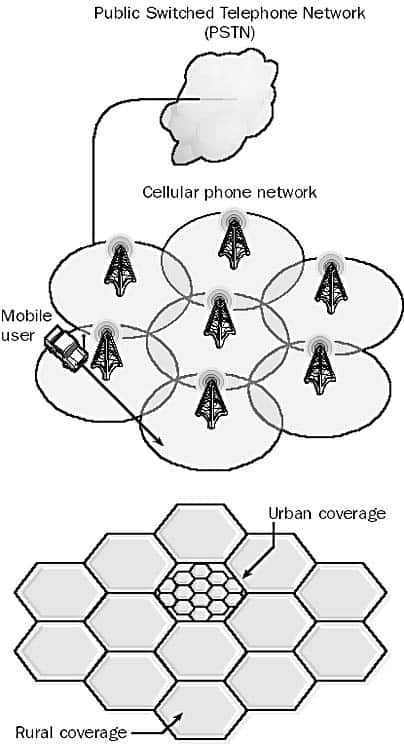Definition of Cellular Phone Technology in the Network Encyclopedia.
What is Cellular Phone Technology?
Cellular Phone Technology is a general term for a series of different technologies that enable cell-based wireless communication. A variety of different cellular phone technologies have evolved in recent years through the efforts of different vendors and standards organizations. This evolution is expected to continue as technologies mature and develop.
How Cellular Phone Works
The first generation of cellular phone systems were analog, with the Advanced Mobile Phone Service (AMPS) achieving widespread implementation in the United States in the 1980s. Analog cellular phone systems use frequency modulation for voice transmission and frequency-shift keying (FSK) for transmission of signaling information. Channel access is provided by the Frequency Division Multiple Access (FDMA) media access method.
Digital cellular technologies developed in the 1990s, and different competing systems have evolved, including
- Time Division Multiple Access digital cellular, which uses Time Division Multiple Access (TDMA) as its media access method. TDMA supports both analog and digital transmission in a dual-mode configuration.
- Code Division Multiple Access digital cellular, which uses Code Division Multiple Access (CDMA) as its media access method. CDMA is more complex than TDMA, but it is more efficient in its utilization of the frequency spectrum.
- Global System for Mobile Communications (GSM), a popular digital cellular phone technology used in Europe and parts of Asia. GSM uses Time Division Multiple Access (TDMA) as its media access method.
- Personal Communications Services (PCS), a set of multitier technologies that evolved from cordless telephony technologies. PCS systems use smaller cell sizes than other cellular technologies.

Common to all cellular phone technologies is the concept of the cell in wireless communication. Cellular technologies divide their geographical coverage zone into a series of smaller areas called cells that are each serviced by a transmission station. These stations are implemented in a distributed fashion to provide an overlapping series of cells that ensure all portions of a geographical region are serviced. Channels are then allocated to cells in such a way that no two adjacent cells use the same group of channels. Repeating patterns of cells are then used to optimize coverage while maintaining the maximum number of available channels per cell. For example, if you travel in a certain direction, every third cell might utilize the same set of frequencies.
When a mobile client is in one of the cells, he or she can receive and transmit information to the station servicing that cell. When the client moves to a different cell during a conversation, the new cell’s station seamlessly assumes communication with the client. One of the advantages of this system over the use of a single high-powered transmission station is that the client equipment (cell phone) itself does not need to be very powerful, which saves on size and cost.
Other aspects of designing a cellular phone technology include
- Choice of modulation techniques
- Signal-encoding methods
- Error-detection and error-correction methods
- Security-coding methods
- Multiplexing methods for creating different channels from available bandwidth
NOTE
With the advent of cellular modems for mobile users, knowledge of cellular phone technologies is becoming an important aspect of wide area network (WAN) connectivity for the networking professional.